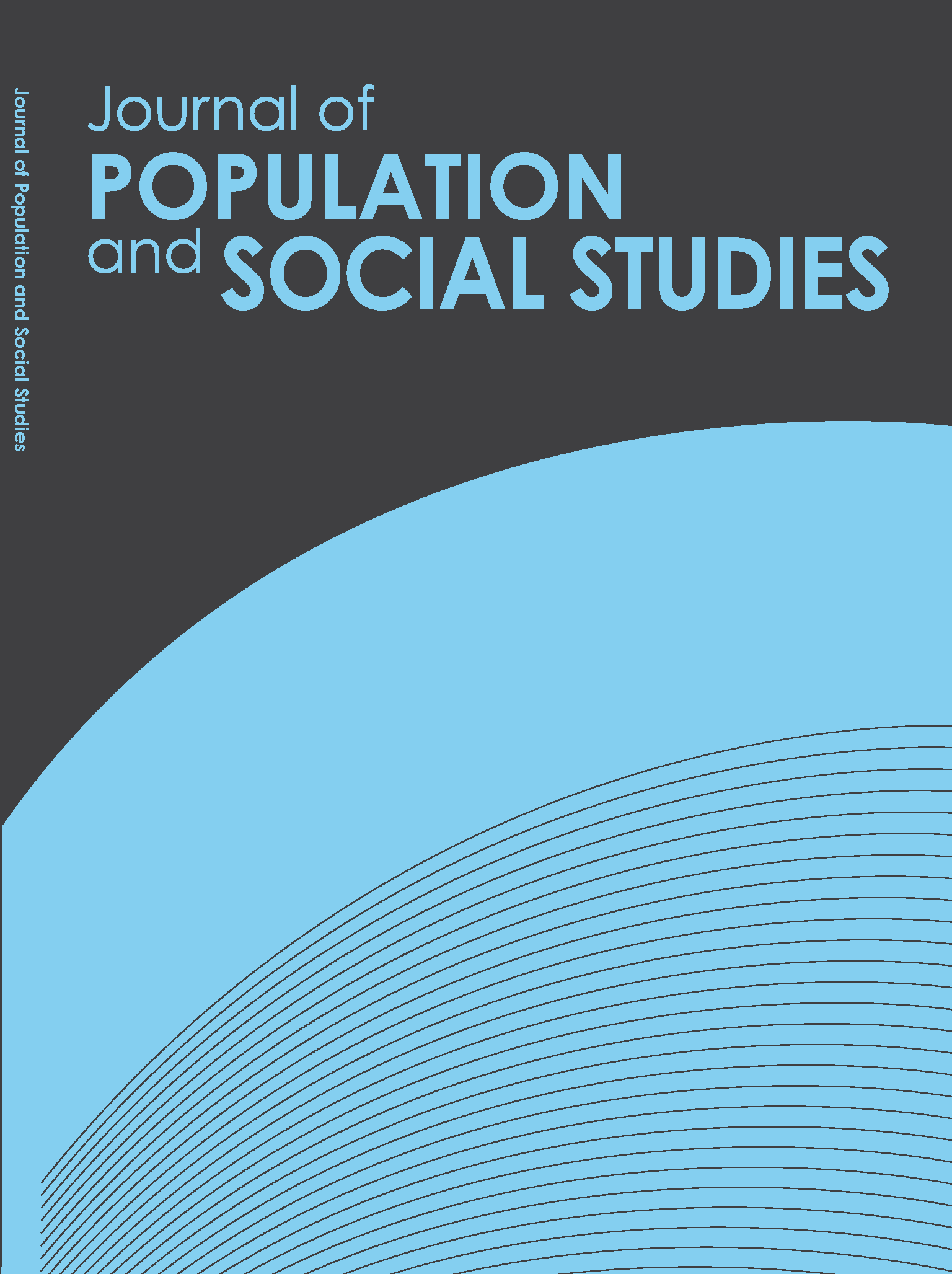Religiosity, Spirituality, and Happiness in Thailand from the Perspective of Buddhism
Main Article Content
Abstract
Studies on the association between religiosity, spirituality, and happiness in the Buddhist context remain scarce despite the great number of followers of this religion around the world. Theravada Buddhism, as the dominant Buddhist sect in Thailand, has a strong influence on Thai people’s attitudes, thoughts, and way of life. The purpose of this study was to explore the link between religiosity and spirituality and level of happiness among the Thais. Data were pooled from national surveys on social and cultural issues in 2008 and 2011. The samples were 25,950 and 23,671 Thai people aged 15 years or older. The results revealed frequency of religious and spiritual practices was significantly associated with greater level of happiness, even after controlling for study year, demographic factors (age, sex, and marital status), and socioeconomic factors (education and occupation). Respondents who abided by the five precepts of Buddhism and meditated on Buddhist holy days reported higher levels of happiness. Those who regularly expressed gratitude, gave an opportunity to others before oneself, and made donations were more likely to consider themselves happy compared with those who never or rarely engaged in these Buddhist-inspired practices. These findings support the idea that religiosity and spirituality play a relevant role in the level of happiness among Thai people.
Article Details
References
• Abdel-Khalek, A. M. (2006). Happiness, health and religiosity: Significant relations. Mental Health, Religion and Culture, 9, 85-97.
• Cummins, R. A., Eckersley, R., Pallant, J., Van Vugt, J. & Misajon, R. (2003). Developing a national index of subjective wellbeing. The Australian Unity Wellbeing Index. Social Indicators Research, 64, 159–190.
• Decharut, S., Priya, U., Wangkarn, S., Rungrojchanakit, D. & Kaewhan, R. (2012) Thailand’s life satisfaction and happiness. Thailand National Progress Index Program, Healthy Public Policy Foundation. Retrieved September 7, 2015 from http://www.npithailand.com/sites/default/files/Thailand%20Life%20Satisfaction%20and%20Happiness.pdf.
• Frey, B. S. (2008). Happiness: A revolution in economics. Cambridge, Mass: MIT Press.
• Frey, B. S. & Gallus, J. (2013). Subjective well-being and policy. Topoi, 32(2), 207-212.
• Frey, B. S. & Stutzer, A. (2002). Happiness and economics. Princeton: Princeton University Press.
• George, L. K. (2010). Still happy after all these years: Research frontiers on subjective well-being in later life. Journal of Gerontology: Social Sciences, 65B(3), 331-339.
• Ghose, L. (2007). Karma and the possibility of purification: An ethical and psychological analysis of the doctrine of Karma in Buddhism. Journal of Religious Ethics, 35, 2, 259-289.
• Gray, R. S., Kramanon, R. & Thapsuwan, S. (2008). The determinants of happiness among Thai people: Some evidence from Chai Nat and Kanchanaburi. Thammasat Economic Journal, 26(2), 72-87.
• Gray, R., Tantipiwatanaskul, P. & Suwannoppakao, R. (2010). Happiness among Thai people: Living a virtuous life, spirituality and self-esteem. Journal of Mental Health of Thailand, 18, 71 - 85.
• Gray, R. S., Hahn, L., Thapsuwan, S. & Thongcharoenchupong, N. (2016). Strength and stress: Positive and negative impacts on caregivers for older adults in Thailand. Australasian Journal on Ageing, 35(2), E7–E12. doi:10.1111/ajag.12266
• Hellevik, O. (2017). The U-shaped age–happiness relationship: real or methodological artifact? Quality & Quantity, 51(1), 177-197.
• Joshanloo, M. (2014). Eastern conceptualizations of happiness: Fundamental differences with western views. Journal of Happiness Studies, 15, 475-493.
• Kalmijn, W. & Veenhoven, R. (2005). Measuring inequality of happiness in nations: In search for proper statistics. Journal of Happiness Studies, 6(4), 357-396.
• Koenig, H., King, D. & Carson, V. B. (2012). Handbook of religion and health. New York, NY: Oxford University Press.
• Laaksonen, S. (2018). A research note: Happiness by age is more complex than U-shaped. Journal of Happiness Studies, 1-12.
• Layard, R. (2005). Happiness: Lessons from a new science. New York: The Penguin Press.
• McAndrew, S. & Voas, D. (2011). Measuring religiosity using surveys. Survey Question Bank: Topic Overview, 4, 1-15.
• National Statistical Office. (2010). The 2010 population and housing census (Whole Kingdom): Executive summary. Retrieved September 7, 2015 from http://popcensus.nso.go.th/file/popcensus-10-01-56-E.pdf.
• Office of the National Economic and Social Development Board. (2009). Green and happiness in Thai society: The first year of the 10th National Economic and Social Development Plan. Bangkok: Office of the National Economic and Social Development Board.
• Payutto, Bhikkhu P.A. (2007). Vision of the Dhamma: A collection of Buddhist writings in English. Wat Nyanavesakavan, Nakhon Pathom, Thailand.
• Payutto, P. A. (2016). Dictionary of Buddhism Phra Brahmagunabhorn. Retrieved October 15, 2018 from http://www.watnyanaves.net/uploads/File/books/pdf/dictionary_of_buddhism_pra-muan-dhaama.pdf.
• Pew Research Center (2012). The global religion landscape: A report on the size and distribution of the world’s major religious groups as of 2010, December, Washington, D.C.
• Ross, L. (2006). Spiritual care in nursing: an overview of the research to date. Journal of Clinical Nursing, 15(7), 852-862.
• Prince Damrong Rajanubhab (1973). Monuments of the Buddha in Siam, trans. Sulak Sivaraksa and A.B. Griswold (Bangkok: The Siam Society). pp.1-2.
• Sirikanchana, P. (2014). Buddhism in Thailand: Unity in Diversity. (Thai language) Thammasat Publishing.
• The International Wellbeing Group. (2006). Personal wellbeing index–adult (Manual 4th ed.) Melbourne: Australia.
• Ura, K., Alkire, S., Zangmo, T. & Wangdi, K. (2012). A short guide to gross national happiness index. Thimphu: The Centre for Bhutan Studies. Retrieved September 7, 2015 from http://www.grossnationalhappiness.com/wp-content/uploads/2012/04/Short-GNH-Index-edited.pdf.
• Wills, E. (2009). Spirituality and subjective well-being: Evidences for a new domain in the personal well-being index. Journal of Happiness Studies, 10, 49-69.
• Winzer, L. & Gray, R. S. (2018). The role of Buddhist practices in happiness and health in Thailand: A Structural Equation Model. Journal of Happiness Studies. doi: https://doi.org/10.1007/s10902-017-9953-z
• Yiengprugsawan, V., Seubsman, S., Khamman, S., Lim, L. L.-Y., Sleigh, A. C. & the Thai Cohort Study Team (2010). Personal wellbeing index in a national cohort of 87,134 Thai adults. Social Indicators Research, 98, 201–215.
• Zwingmann, C., Klein, C. & Büssing, A. (2011). Measuring religiosity/spirituality: Theoretical differentiations and categorization of instruments. Religions, 2(3), 345-357.


